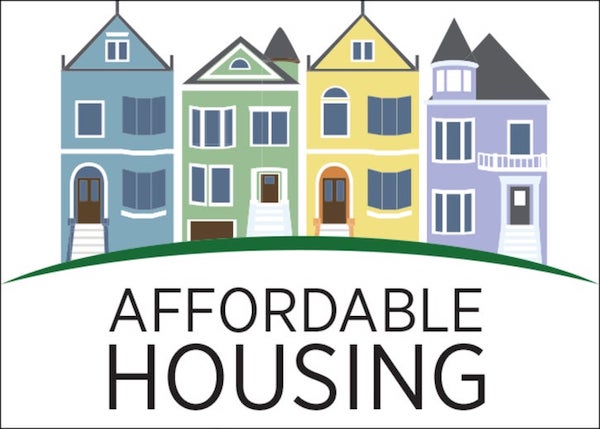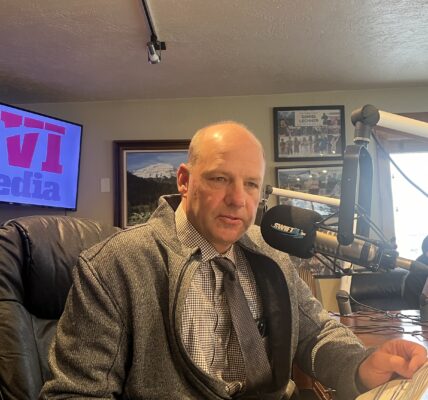
By Mary Steurer
Casper Star-Tribune
Via- Wyoming News Exchange
CASPER — In Jackson, workers camp out in cars and tents.
In Cheyenne, hundreds commute from neighboring towns.
Meanwhile, Laramie is struggling to attract new businesses, Wyoming Public Media reported last year.
All because of an affordable housing shortage.
Lawmakers will look for solutions during this year’s interim legislative session.
The interim session is the Legislature’s brainstorming period. Lawmakers meet to research dozens of issues affecting the state, and blueprint bills to address them.
Earlier this month, the Joint Corporations, Elections and Political Subdivisions Committee named workforce housing as its second-highest priority for the interim.
It’ll be new territory for lawmakers, said Rep. Dan Zwonitzer, R-Cheyenne, co-chair of the committee.
Housing reform has had a fringe following in the Wyoming Legislature for years, especially among Teton County lawmakers. For the most part, though, the state’s left the matter to local governments and housing groups to sort out.
And they tried, said Brenda Birkle, head of Cheyenne’s affordable housing task force and executive director of My Front Door, a nonprofit that helps first-time home buyers. It wasn’t enough.
“Attempts to manage it elsewhere, outside of the Legislature, have failed,” she said.
Meanwhile, the affordable housing shortage is only getting worse, advocates and officials told the Star-Tribune, especially since the start of the coronavirus pandemic.
The committee’s aim is twofold, Zwonitzer said: figure out why, and what can be done about it.
“I don’t think there’s a clear end point of where we want to get to,” Zwonitzer said. “It’s really a survey of the field and what possibilities are before us.”
The first task is nailing down the problem. The committee will consult a variety of groups for help, including housing advocates, realtors and construction companies, Zwonitzer said.
What is “workforce housing,” anyway?
Housing organizations often use the term to mean housing for low- or middle-income workers, especially those employed in major industries and essential services.
In Teton County, that’d be housing for those tourism and hospitality jobs, for instance.
Some housing groups define workforce housing by income level instead. In those cases, the term usually refers to housing for people making around 50% to 120% of their community’s area median income.
In Teton County, that’s roughly $43,500 to $104,500. That same bracket in Laramie County would be $33,500 to $80,400, according to data from the U.S. Department of Housing and Urban Development (HUD).
Birkle’s organization, My Front Door, primarily serves people who make a little less than that — between 30% and 80% of the area median income. (That’s around $26,100 to $69,600 in Teton County and $20,073 to $53,528 in Laramie County, according to HUD data.)
While quality housing is often woefully out-of-reach for households in this bracket, they make up a huge portion of the population, Birkle said. Helping them could have an enormous impact on stabilizing the workforce, she said.
“Really, if you want to break the poverty cycle permanently, it’s in that group,” she said.
So, what about solutions?
Birkle urged the committee to lean on nonprofits that work in workforce housing for help finding some direction.
Dan Dorsch, special projects coordinator for Habitat for Humanity of Laramie County, recommended housing trust funds as a potential starting point. (Dorsch also sits on Cheyenne’s affordable housing task force.)
Housing trust funds set aside pools of money for affordable housing programs. There are a few different ways the state could pay for one, Dorsch explained.
Federal programs are available through the National Housing Trust Fund, “but they can be difficult to navigate and have a lot of red tape that smaller organizations don’t have the capacity to access,” he said in an email.
“Local housing trust funds make it easier to access funds, and can be used in conjunction with federal dollars,” he added.
Dorsch pointed to Iowa’s State Housing Trust Fund program as a potential model.
Wyoming lawmakers have no shortage of their own ideas for addressing the housing shortage.
Teton County delegates have long floated the so-called “McMansion Tax” bill, for example, to prop up Jackon’s housing programs. That legislation would let counties pull in extra cash by taxing high-end real estate transfers. The latest version of the bill, which was sponsored by the Joint Revenue Committee, failed its introductory vote on the house floor in February.
Shelly Duncan, R-Lingle, spoke against the McMansion Tax during the 2022 legislative session. Duncan works in real estate, and said the tax unfairly burdens commercial property owners and home buyers.
Duncan, who is a member of the Corporations Committee, is in favor of creating a state agency to keep stock of housing needs and coordinate relief efforts in times of crisis.
“We need to take a holistic look across the entire state,” she said.
It could also serve as Wyoming’s fair housing office, Duncan said. Wyoming is one of just a handful of states without an agency to enforce housing discrimination law.






